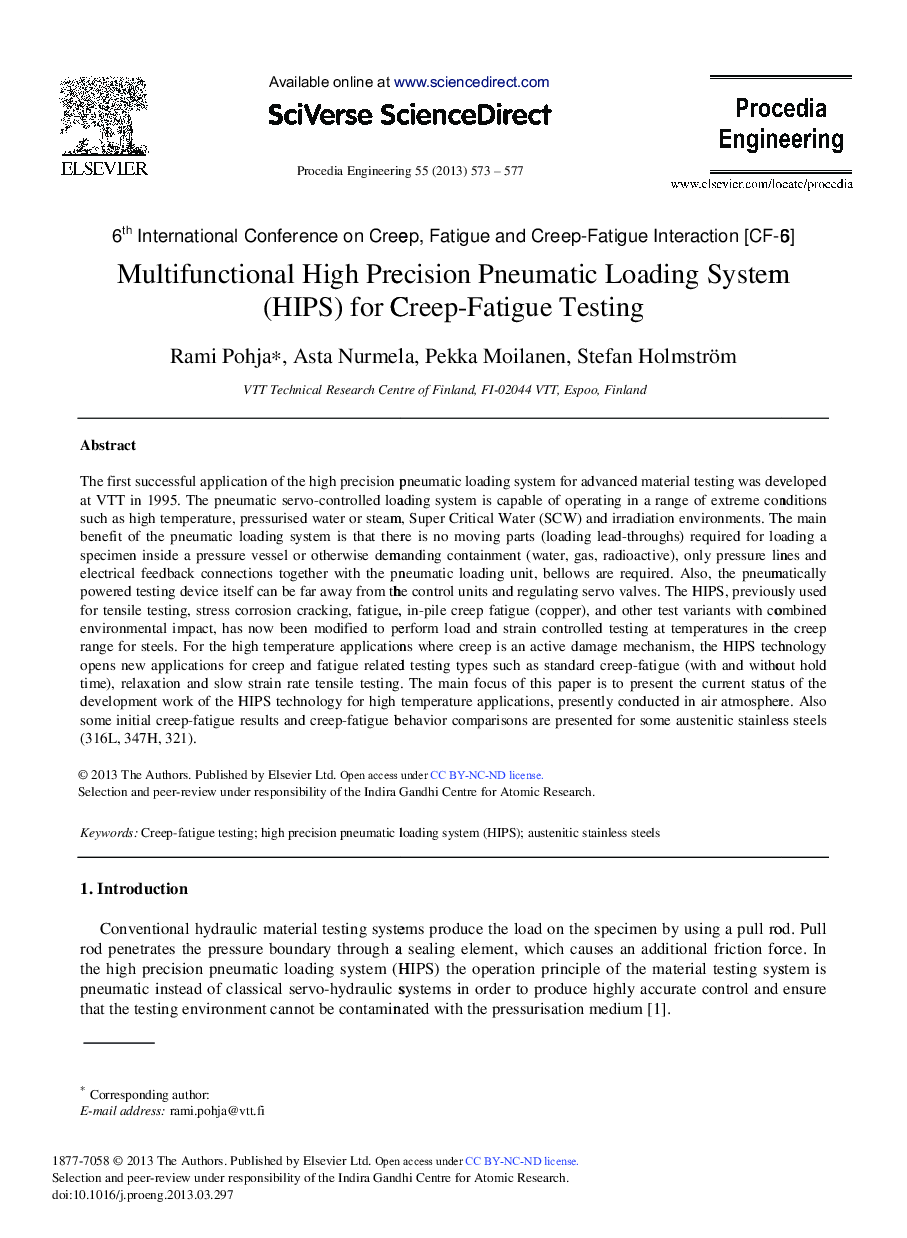| Article ID | Journal | Published Year | Pages | File Type |
|---|---|---|---|---|
| 860535 | Procedia Engineering | 2013 | 5 Pages |
The first successful application of the high precision pneumatic loading system for advanced material testing was developed at VTT in 1995. The pneumatic servo-controlled loading system is capable of operating in a range of extreme conditions such as high temperature, pressurised water or steam, Super Critical Water (SCW) and irradiation environments. The main benefit of the pneumatic loading system is that there is no moving parts (loading lead-throughs) required for loading a specimen inside a pressure vessel or otherwise demanding containment (water, gas, radioactive), only pressure lines and electrical feedback connections together with the pneumatic loading unit, bellows are required. Also, the pneumatically powered testing device itself can be far away from the control units and regulating servo valves. The HIPS, previously used for tensile testing, stress corrosion cracking, fatigue, in-pile creep fatigue (copper), and other test variants with combined environmental impact, has now been modified to perform load and strain controlled testing at temperatures in the creep range for steels. For the high temperature applications where creep is an active damage mechanism, the HIPS technology opens new applications for creep and fatigue related testing types such as standard creep-fatigue (with and without hold time), relaxation and slow strain rate tensile testing. The main focus of this paper is to present the current status of the development work of the HIPS technology for high temperature applications, presently conducted in air atmosphere. Also some initial creep-fatigue results and creep-fatigue behavior comparisons are presented for some austenitic stainless steels (316L, 347H, 321).
